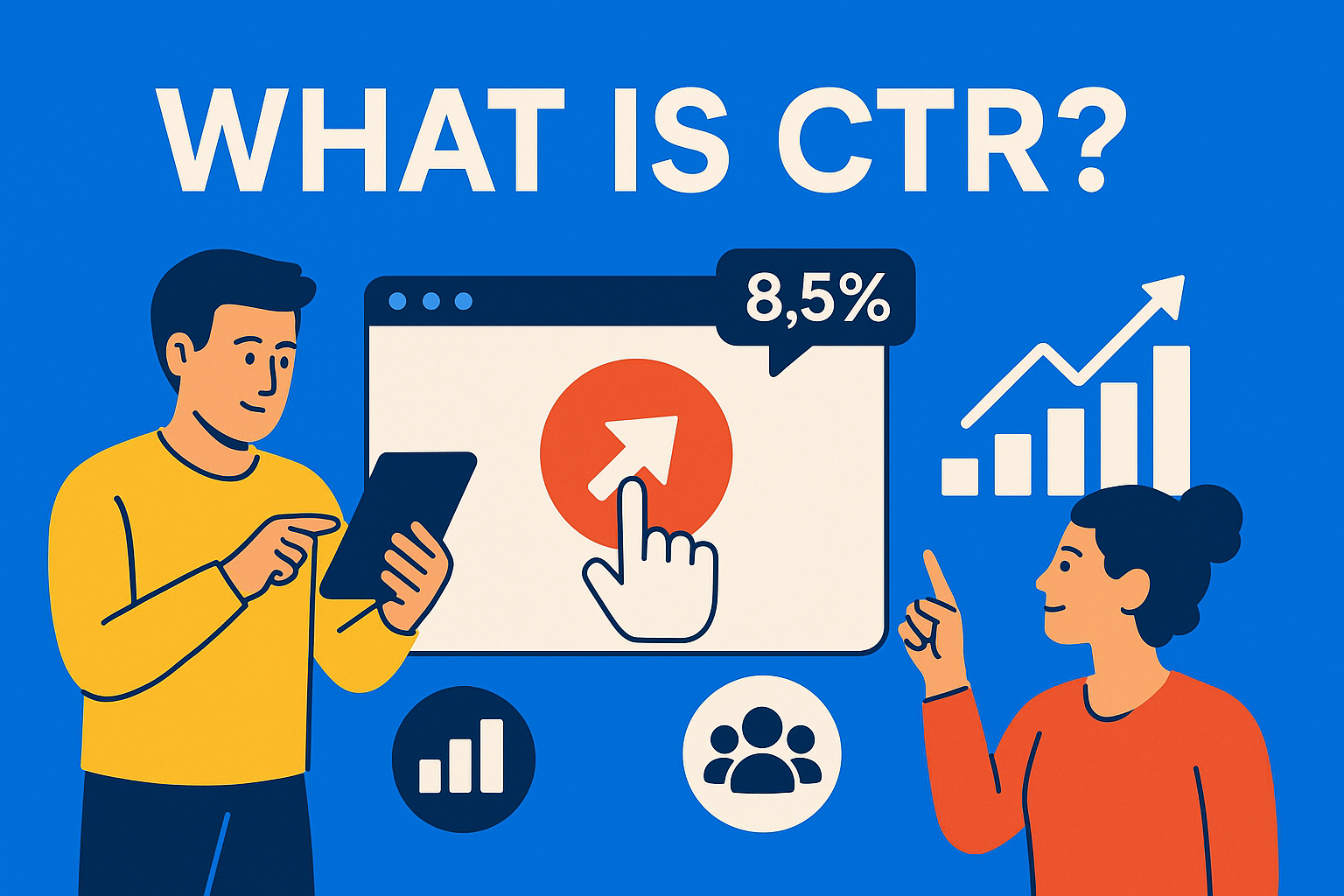What is CTR (Click Through Rate)
Discover what CTR (Click Through Rate) means, why it matters in digital marketing, and how to measure and improve it for better campaign performance. Ideal for content teams, marketers, and SEO professionals aiming to boost engagement and ROI.

In the world of digital marketing, tracking and analyzing campaign performance is the foundation for making data-driven decisions. Among the numerous metrics used to assess success, CTR (Click Through Rate) holds a key position. This metric, which measures the ratio between the number of clicks and the number of impressions, plays a crucial role in campaign optimization across almost all digital channels. Whether it’s Google Ads, email marketing, or SEO strategies, understanding and analyzing CTR can directly impact ROI and overall marketing results.
In this article, we will explain what CTR is, why it matters, how it is measured, and how it can be improved. We will also compare CTR to other relevant metrics and provide concrete tips for its optimization.
Key Takeaways
- CTR (Click Through Rate) measures how many users clicked versus how many saw your content - it’s a direct signal of engagement.
- High CTR means your message grabs attention, but it must be combined with conversion and bounce data to assess true performance.
- CTR is used in paid ads, email, SEO, and social media - and benchmarks vary by platform and industry.
- Improving CTR starts with better headlines, relevant CTAs, and clear value communication tailored to your audience.
- CTR alone doesn't tell the full story - always analyze it alongside conversion rate, engagement depth, and content alignment.
What is CTR?
CTR (Click Through Rate) represents the percentage of users who clicked on a link compared to the number of times that link was displayed (impression). The formula for calculating CTR is simple:
For example, if an ad was shown 10,000 times and users clicked 100 times, the CTR would be 1%. CTR is used in multiple contexts: in paid ads (PPC), SEO results, email campaigns, and even organic posts on social media.
For content marketing and SEO teams, CTR can be an indicator of how relevant and appealing meta titles and descriptions are to users in search results.
Why is CTR Important?
CTR is not just a number - it’s an indicator of user engagement. A high CTR suggests that your content, ad, or headline caught attention and prompted action. CTR is especially important in:
- SEO, where it can influence positioning in SERPs because search engine algorithms consider user behavior
- Google Ads campaigns, where it directly affects Quality Score, and consequently the cost per click (CPC)
- Email marketing, where measuring clicks on CTAs within newsletters indicates content relevance
However, it is important to note that a high CTR does not guarantee a high conversion rate. An ad may be clicked many times, but if users quickly leave the site without taking action, ROI suffers. That’s why it’s crucial to analyze CTR in the context of other metrics.
Where is CTR Measured?
CTR is measured across almost all digital channels:
- Search engines: both in organic (SEO) and paid (PPC) results
- Email campaigns: measures the number of clicks on links within emails relative to the number of successfully delivered emails
- Social media: Facebook, Instagram, LinkedIn, and other platforms display CTR for paid and organically distributed posts
- Display ads: banners and visual ads where CTR measures the effectiveness of visuals and copy
For example, the average CTR in the Google Ads search network is around 3-5%, while for display ads it’s significantly lower, around 0.5-1%. In email marketing, a good CTR ranges between 2-5%, depending on the industry and segmentation.
How is CTR Calculated (with Examples)
Understanding how to calculate CTR is essential for interpreting campaign results:
Example 1: Google Ads
Impressions: 20,000
Clicks: 400
Example 2: Email Campaign
Emails Delivered: 5,000
Link Clicks: 250
Tracking CTR is especially useful in A/B testing, when testing different versions of headlines, CTA buttons, or visuals.
What is a Good CTR?
What is considered a “good” CTR depends on the industry, communication channel, and type of campaign (brand awareness vs. lead generation).
In B2B marketing, a CTR above 2% in email campaigns can be very good, while for e-commerce websites the threshold is higher. In SEO, the CTR for the first position in Google results can exceed 25-30%, but it quickly drops from the third result downward.
It’s important that a “good CTR” is viewed in relation to the conversion funnel, because a high CTR with low conversions may indicate a problem in the user experience or a mismatch between the ad and the content on the landing page.
How to Improve CTR?
Increasing CTR requires a combination of creative approach and analytical thinking:
- Optimize headlines and meta descriptions: clear, specific, with relevant keywords included
- Strong CTA (call to action): buttons and text that clearly communicate benefits (e.g., “Learn More,” “Book a Demo”)
- A/B testing: test different versions of ads, headlines, visuals
- Audience segmentation: tailor messages to the specific interests and needs of your target group
- Mobile-first approach: especially important for email and social campaigns
In the context of performance marketing, even small changes in CTR can have a significant impact on overall budget and return on investment.
CTR vs Other Metrics
CTR is often compared to:
- Conversion Rate: shows how many of those who click actually convert
- Bounce Rate: how many users leave the page without interaction
- Impressions and Reach: how many people saw the content regardless of engagement
On its own, CTR is indicative, but not sufficient for a complete evaluation of campaign success. It is essential to analyze it together with other metrics for a holistic picture.
Common Mistakes and Misconceptions About CTR
- Focusing solely on CTR without insight into post-click behavior
- Ignoring context - high CTR doesn’t necessarily mean campaign success
- Using clickbait headlines that lead to low user retention on the page
- Misinterpreting CTR across different channels (email vs. Google Ads)
Conclusion
CTR is an essential metric in every digital marketer’s toolkit. It offers a quick insight into communication effectiveness, message relevance, and user engagement. However, to truly extract value from CTR, it must be analyzed in a broader context of other metrics such as conversions, bounce rate, and time on site.
For content teams, CTR can be a valuable signal that indicates how effectively messages are formulated to drive user action. When properly interpreted and optimized, CTR can significantly enhance the overall performance of digital campaigns and contribute to business goals.






